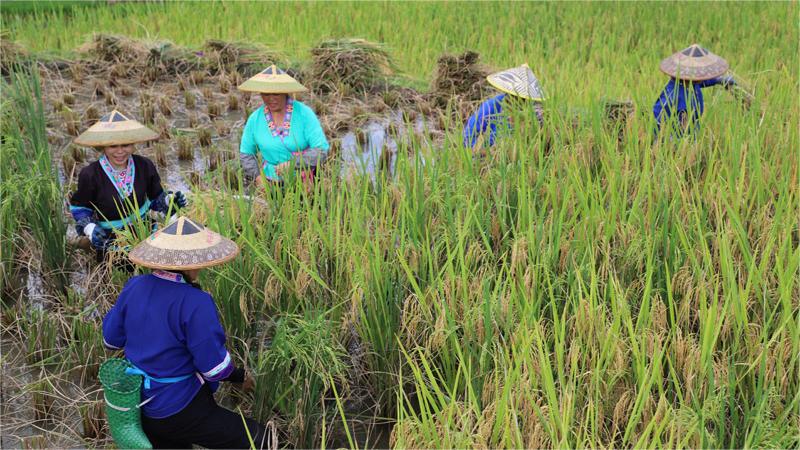Culture brings vigor to China's Hunan
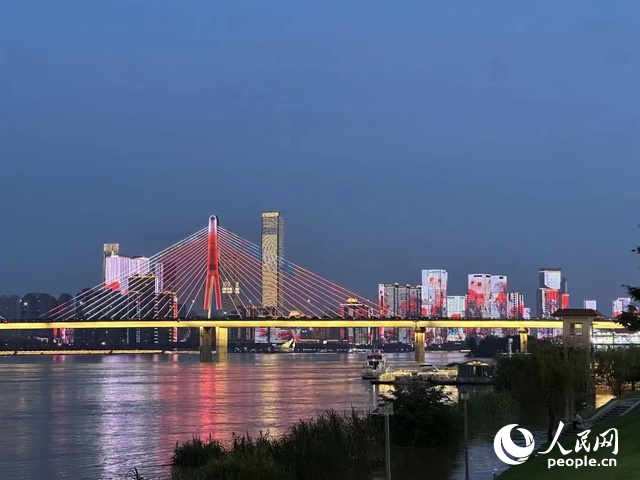
Photo shows the night view along the Xiangjiang River in Changsha, capital city of central China's Hunan Province. (People's Daily Online/Wu Xiwei)
By leveraging culture, central China's Hunan Province has witnessed the emergence of more hidden gem cities and "guochao" brands, which are brands based in China often with local characteristics, that highlight the charm of Chinese culture, driving the accelerated development of the cultural industry.
Changsha, capital city of Hunan, boasts profound cultural heritage and is home to trendy internet-famous brands. Building on Hunan culture, which stresses practicality, Changsha has done a fantastic job of blending its culture into the hustle and bustle of urban life, standing out as a "cyberstar" city.
On Taiping Street, a bustling commercial area and historical and cultural site in Changsha, tourists drink milk tea with guochao elements, pass through residences of historical figures, and find themselves surrounded by vibrant and trendy stores. The street, deeply rooted in the cultural heritage of Changsha, exudes a fashionable atmosphere.
Using technology to elevate culture
At the 8,000 square meter 5G smart studio in Malanshan Video Cultural and Creative Industrial Park in Changsha, a large program was in rehearsal.
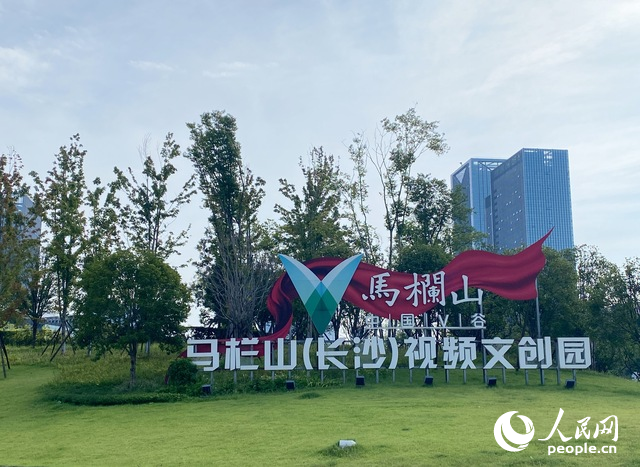
Photo shows the Malanshan Video Cultural and Creative Industrial Park in Changsha, capital city of central China's Hunan Province. (People's Daily Online/Xiang Yu)
Inside the studio, over 4,000 lights and 1,800 square meters of LED screens created a dazzling stage effect. The cumbersome cables traditionally attached to cameras were replaced by a small box.
"This is our self-developed 'Malanshan Box', which solves the problem of cameramen being tethered by cables and, equipped with a 5G high-performance video codec chip, makes simultaneous shooting, transmission, and editing possible," explained Zhou Yihui, manager of the chairman's office at Hunan Letian Film Media Co., Ltd.
Malanshan, empowered by technology, is taking the lead and making excellent traditional culture become real.
Old film reels, under AI coloring and manual restoration, bring new colors to dim and blurry black-and-white images.
In the creative interactive program, poetry from the poet Li Bai, empowered by AR technology, crosses time and space to interact closely with the audience.
In recent years, Malanshan Video Cultural and Creative Industrial Park has firmly grasped the key to integrating culture and technology, forming a digital cultural industry chain covering creativity, content production, storage, broadcasting, and trading, launching multiple popular programs, and attracting a batch of supply chain enterprises. So far, more than 4,000 new enterprises have registered here.
Museums are also working to use technology to elevate the consumption of culture.
Thanks to the application of cutting-edge technologies, visitors are blown away by an exhibition entitled "The Art of Life: Multimedia Exhibition of Mawangdui Han Culture" based on the Mawangdui Tombs of the Han Dynasty (206 B.C. - 220 A.D.) at the Hunan Museum in Changsha through ultra-high-definition artifact scanning, 3D projections, and a giant LED spherical screen.

A tourist watches a digital replica of an artifact from the Mawangdui Tombs of the Han Dynasty (206 B.C. - 220 A.D.) at the Hunan Museum in Changsha, capital city of central China's Hunan Province. (People's Daily Online/Wu Xiwei)
Chen Xuliang, deputy Party chief of the museum, said the growing interest of young people in museums shows the vitality of China's culture.
Rolling out comprehensive and diverse exhibitions by integrating culture with technologies can meet people's aesthetic needs and make static cultural relics lively, thus attracting more people to pay attention to cultural heritage protection, Chen added.
Technology is also helping to keep cultural heritages more relevant in the modern world.
Liuyang, a county-level city in Changsha, is known as the "hometown of fireworks." Liuyang fireworks are a cultural heritage in Hunan.

Fireworks light up the sky in Liuyang, a county-level city in Changsha, capital city of central China's Hunan Province. (Photo/Deng Xialin)
Liuyang-made fireworks lit up the opening ceremony of the Paris Olympics with firework machines.
"The firework machines used at the opening ceremony were high-end ones that contained no gunpowder," said an executive of Showven Technologies Co., Ltd. based in Liuyang.
With the development of modern science and technology, the company's non-gunpowder fireworks have been exported to over 90 countries and regions including Europe and America. Beyond the Paris Olympics, the company's fireworks also lit up the opening ceremonies of the 2022 FIFA World Cup in Qatar, the 2018 FIFA World Cup in Russia, and the Hangzhou Asian Games.
Blending culture with consumption
Hunan has vigorously promoted the integration of culture and tourism. Last year, the culture and tourism department of Hunan issued several measures to promote the recovery of the culture and tourism industries.
Multiple regions in Hunan have vigorously developed the culture and tourism sectors according to local resources.
Changsha, a city among the first batch of state-level famous historic and cultural cities in China, is leaving no stone unturned in tapping into its profound cultural resources to create new consumption scenarios of fine traditional culture, according to an official with the city's bureau of culture and tourism.
In Qingxi village, Yiyang city, 21 bookstores transformed from farmhouses and named after Chinese writers captivate tourists from various regions.
Hejie Street, a renovated cultural street in Changde city, showcases folk operas including Changde silk string and Changde Gaoqiang opera.
At the Ziquejie Terraces in Xinhua county, Loudi city, local inheritors of Xinhua folk song, an intangible cultural heritage, sing a folk song, with the melodies lingering in the air.
In recent years, the local governments have turned the Ziquejie Terraces into a 4A-level tourist attraction, the second-highest level in China's tourism evaluation system, which has become a magnet for tourists from a wide area.

Photo shows a view of the Ziquejie Terraces in Xinhua county, Loudi city, central China's Hunan Province. (People's Daily Online/Liu Wei)
At a conference named "From Ziquejie Terraces to the World: Global Farming Culture Exchange and Mutual Learning Conference," which took place in Xinhua county last year, experts from various countries were impressed by the terraces, and the Chinese wisdom of harmony between human beings and nature that they represent.
In addition, new-type consumption brands featuring cultural elements are popping up like mushrooms after rain in Changsha. New-type consumption brands can reinforce each other in Changsha, an inclusive city, according to Mou Yongsheng, a young entrepreneur from northeast China's Heilongjiang Province.
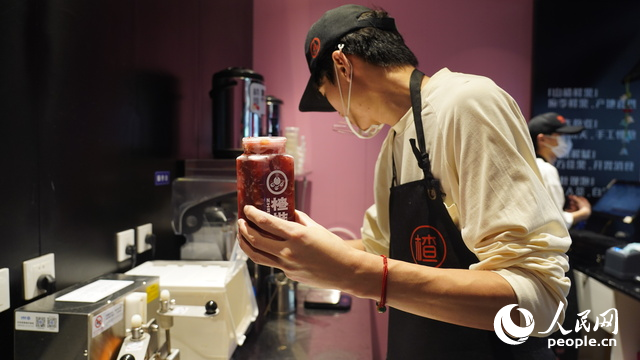
An employee works in a beverage shop in Changsha, capital city of central China's Hunan Province. (People's Daily Online/Wu Xiwei)
The Changsha-based Chinese milk tea brand Modern China Tea Shop launched a subsidiary brand in the city in April 2024. The new stores are imbued with cultural elements and have become popular destinations for young people.
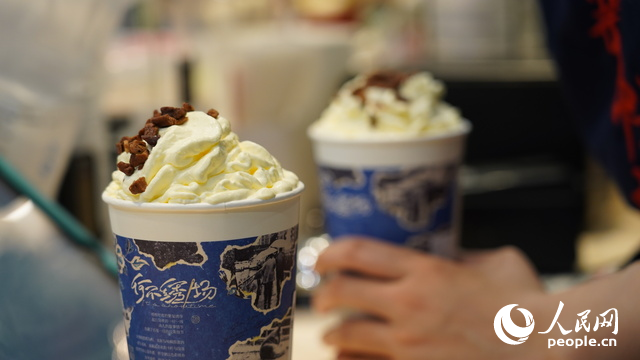
Photo shows products of Chinese milk tea brand Modern China Tea Shop in Changsha, capital city of central China's Hunan Province. (People's Daily Online/Wu Xiwei)
"Changsha actively promotes the integrated development of the nighttime economy and new-type consumption, which provides sufficient nutrients and a favorable business environment for the development of Modern China Tea Shop, enabling us to continuously promote the innovative use of traditional culture in a way that young people are happy to accept," said Liu Qiaofang, who is in charge of the brand department of Modern China Tea Shop.
The consumption upgrading in China emphasizes the value of cultural resonance, said Zhang Dandan, dean of the Changsha New Consumption Research Institute, adding that Changsha, with the pioneering spirit deeply rooted in the city's cultural heritage, has improved its policy system for the development of new-type consumption and nurtured more regional new-type consumption brands.
Photos
Related Stories
- New profession evidence of growing enthusiasm for cultural, creative products
- Integration of culture, tourism picks up steam
- Experience beauty of Chinese culture in 'Black Myth: Wukong'
- Promotion event of Chinese tea culture, Yunnan Province culture, tourism held in Myanmar
- Cultural roots spread in elegant style
- UK students experience dragon boat traditions in south China’s Guangdong
- Qipao stylist chases beauty and love with unique fashion designs
- Chinese graduates explore new horizons of life through travel
- Nvshu: Writing only for women
- Feature: A Cuban cultural anthropologist's academic quest in China
Copyright © 2024 People's Daily Online. All Rights Reserved.









